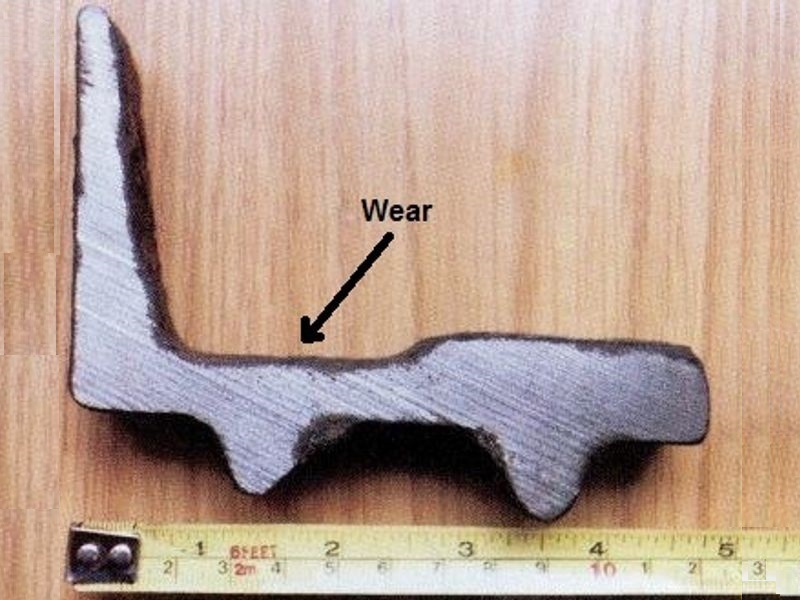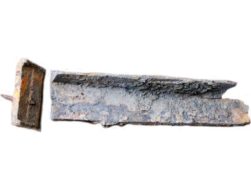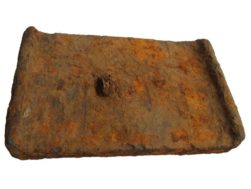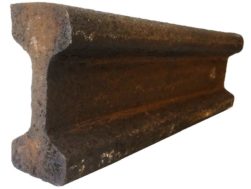Description
Section of a Wilson variant plate rail from the Kilmarnock & Troon Railway found during the Laigh Milton Viaduct Conservation Project.
These strengthened rails, which were an invention of the Kilmarnock & Troon’s manager, John Wilson, were introduced around 1817 and are unique on this track. The three feet long rails had two fillets added immediately under the flat wheel track in order to reduce breakages from the overloading and hammer-blow pounding they received from George Stephenson’s new steam engine “The Duke”. It is estimated that around 70,000 of these rails were laid on the line, but when it was regraded in the 1840s they were all removed for scrap. It appears that this was the only section of rail to have survived idle, being dropped into the river and considered too much trouble to fish out
Note the considerable wear on the plate caused by iron-shod wheels.
This viaduct on the Kilmarnock & Troon Railway, believed to be the world’s oldest viaduct on a public railway, was the work of leading civil engineer William Jessop. The double-track, horse-operated railway was opened in 1812, mainly for the export of coal, although it soon carried passengers. In 1816 it was the first railway in Scotland to operate with a Stephenson steam locomotive; nine years before the Stockton & Darlington.
Numerous significant railway relics were found during the restoration and this is just one of a number of them donated to ICE Scotland Museum.
For a detailed description of the conservation works click here.
Professor Roland Paxton wrote a paper for the Journal Historical Studies in Civil Engineering of the Japan Society of Civil Engineers. To read the paper click here.
For a general description and images of early cast iron plate railways see https://tringlocalhistory.org.uk/Railway/c03_track.htm.
For a film of the restoration works click here.
For an article on the history of the Kilmarnock & Troon Railway written by John Yellowlees in the Scotsman newspaper (dated 25 August 2022) click here.







